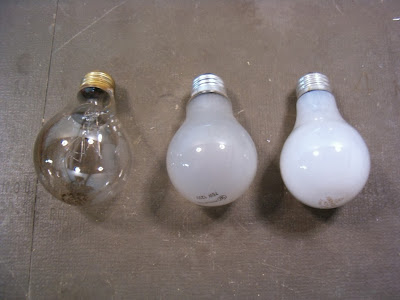Last update 24 November. Original post 22 November
Earlier posts in this series have dealt with the EU review of the light bulb ban, with the details of the EU proposal concerning the future of halogens in the first post.
Recent very good comments on other websites, which I will expand on shortly, include:
• Rik Gheysens with a special press release (pdf, alt copy). This complements earlier posts here in particularly covering the health and environmental effects relating to CFLs and LEDs.
• The Greenwashing Lamps contribution, again with documentation (pdf, alt copy) including well laid out photographic comparisons of using LEDs compared to Halogens, showing the latter in a much better light, as it were.
Clearly the position of this blog is that restrictions on all lighting and indeed other products should be lifted, which are not connected with danger in their use but simply to reduce energy consumption, itself better achieved in other ways.
But the focus at this time is on halogens:
The initial part of the review process deals with the stage 6 proposed ban on remaining halogen replacement bulbs.
As seen from the posts, it seems likely that at least some halogen lighting will be allowed to continue:
But if so, the type of allowed bulbs should be considered.
Specifically, the ban on frosted (non-clear) halogen and similar energy efficient incandescent bulbs should be lifted.
Frosted (matte, pearl) light bulbs and their more opaque (white, opal, soft-tone) varieties generally go by the name "non-clear" bulbs in legal EU terminology:
In comparison with clear, transparent light bulbs the brightness in lumen output and thereby the energy efficiency varies slightly depending on the luminescence of the coating and its thickness, 5-10% either way.
That is, frosted bulbs can be brighter than clear varieties.
The EU research report itself mentions this, by one of the consultants behind it.
Paul van Tichelen replies that we have to make distinction between clear and frosted equivalent.[Note: "(higher lumen output than clear lamps)" albeit emphasized, is the original quote, it is not a comment addition]
A clear lamp is always in the lower lumen output.
The lamps we found with above 800 lumen output were for frosted lamps (higher lumen output than clear lamps).
Clear LED lamps as referred to more commonly have lower brightness than clear incandescents in comparison with their respective alternatives, but the overall point remains.
The outsider might therefore be reasonably perplexed why the EU - and the EU as sole worldwide jurisdiction - banned frosted lighting in the first place.
Frosted bulbs are, or were, the dominant form of incandescents desired by consumers, especially in Northern Europe (90% of pre-ban incandescent sales, Philips/Osram data). They spread the light more evenly and reduce the point-source glare of clear bulbs.
As always, the irony of popularity making Commission people happier to ban, for supposed greater savings.
No point in banning what people don't want to buy!
Accordingly, in their memorandum to the original 2009 legislation, the Commission stated that those "who want non-clear lamps can buy CFLs and LEDs", presumably feeling that it would help push people to those lighting types, and ignoring all other aspects of why a particular form of lighting is chosen.
But the case here remains a peculiar one.
At least the bans on regular incandescents (and certain TV sets, washing machines, vacuum cleaners, etc)
are straightforward "legitimate" bans in terms of energy efficiency standards.
The ban on frosted bulbs, in this case halogens, is pure Orwellian social engineering, without justification in itself,
and without comparison in any other countries.
Will that make the European Commission think again, on the grounds of (shock, horror) showing some magnanimity to consumers and their choices?
Is the moon a balloon?
Making a "light connection" to add to the above...

As always, when politicians and their bureaucrat cronies come up with petty pointless bans, people will try and get around them.
Hence, in this case, the famous (infamous) euro-condoms, as thought up by lighting designer Ingo Maurer, and as covered in earlier posts on this blog:
Screwing the EU with a Condom
Screwing the EU with a Condom... again
How Regulations are Wrongly Justified
14 points, referenced:
Includes why the overall society savings aren't there, and even if they were, why alternative policies are better, including alternative policies that target light bulbs.

No comments:
Post a Comment